It’s been 32 years since I last visited Santorini, and a lot has changed. The island has become much more touristy, with a big increase in rental properties, newly paved roads, and daily cruise ships and visitors arriving from Athens and abroad.
But what hasn’t changed is Santorini’s iconic beauty—the striking contrast of whitewashed buildings and blue domes perched above the deep blue sea. This aesthetic, originally promoted as a branding strategy, has come to represent all of Greece in the global imagination.
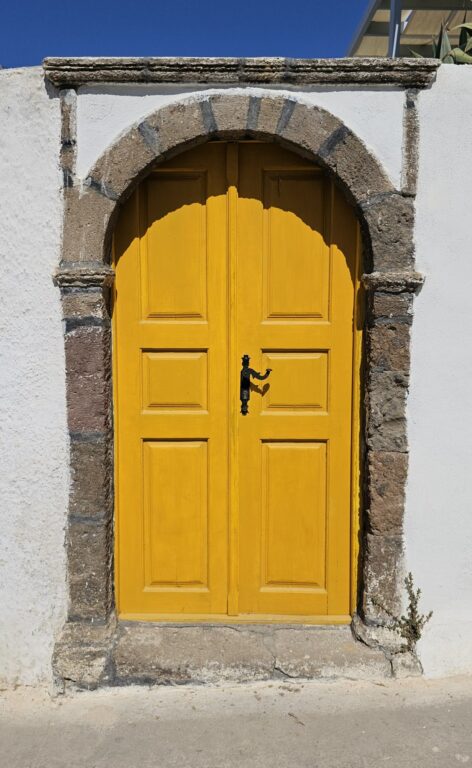
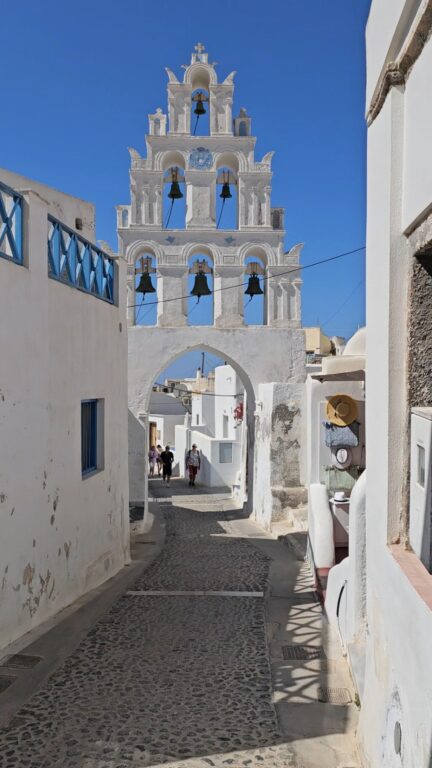
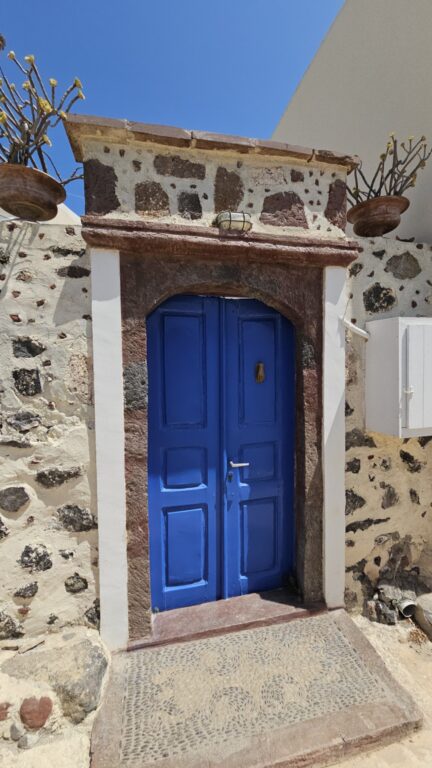
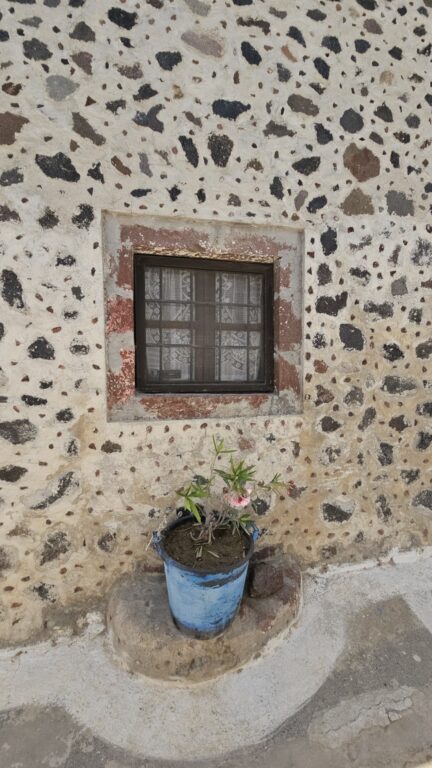
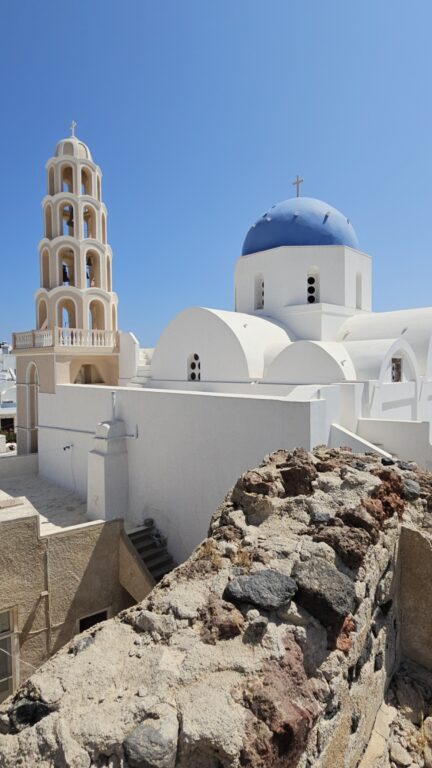
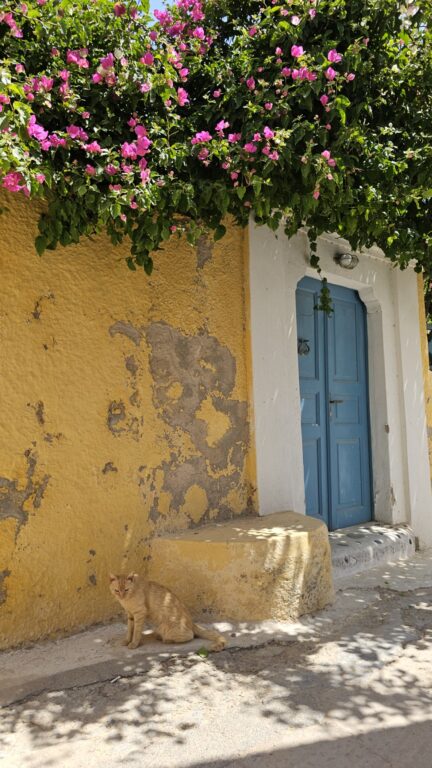
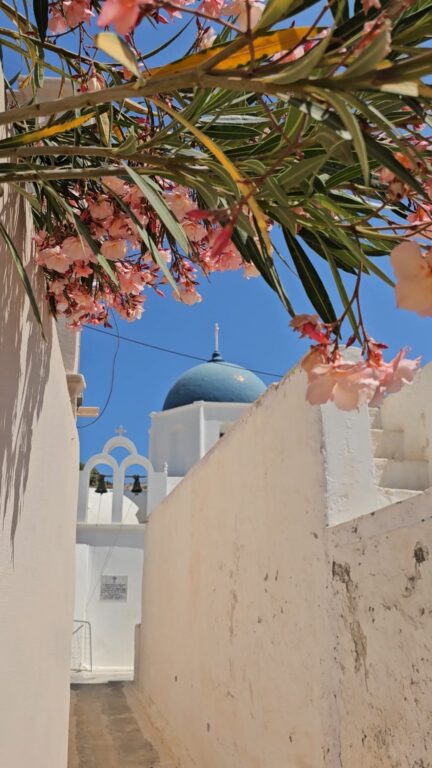
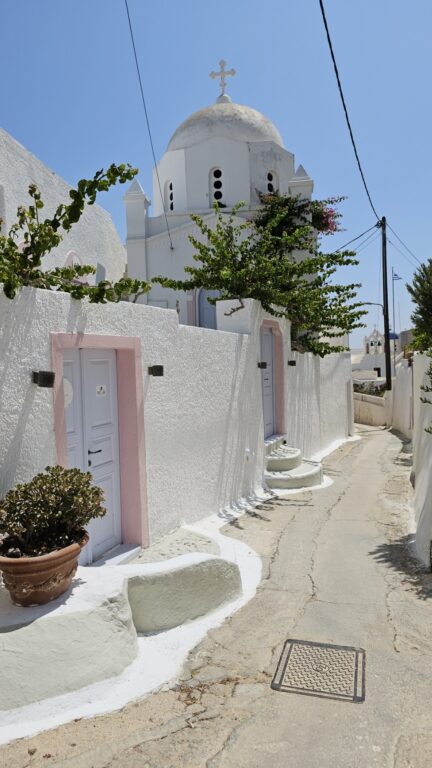
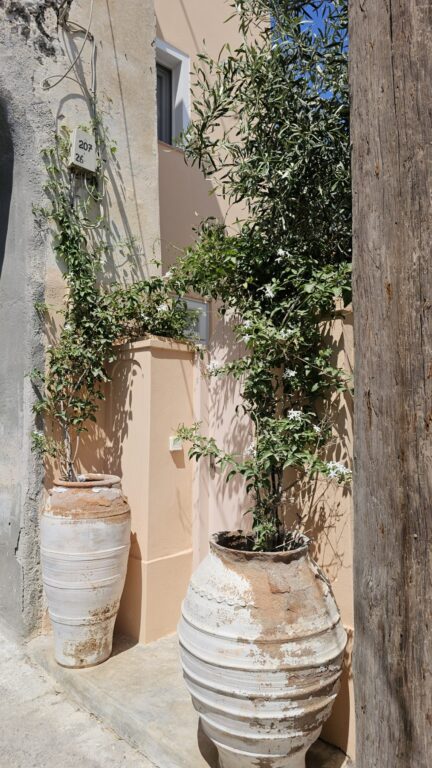

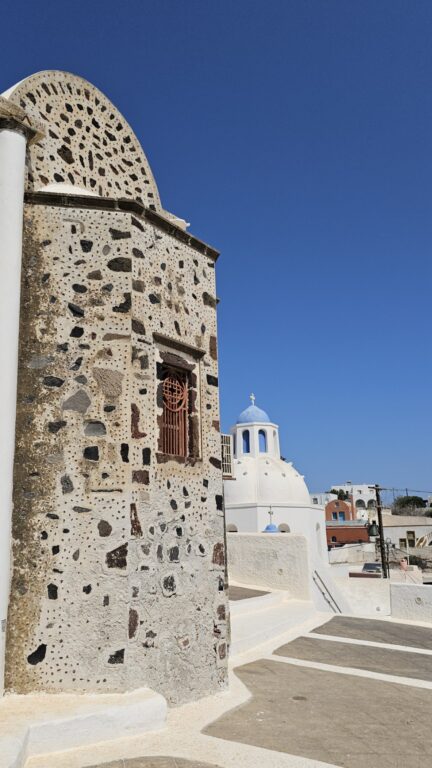
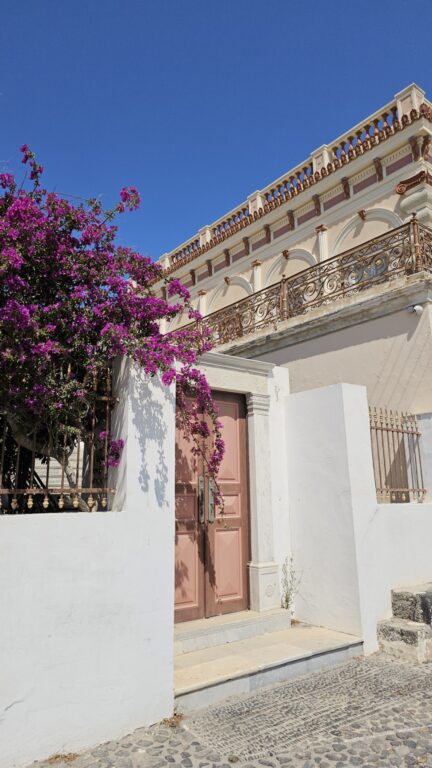
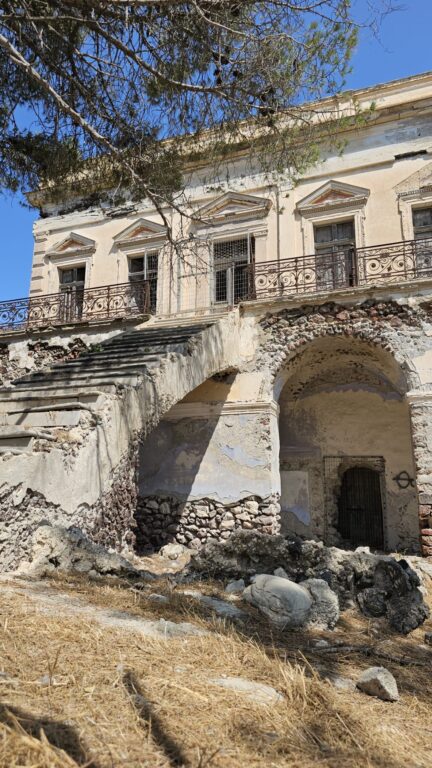

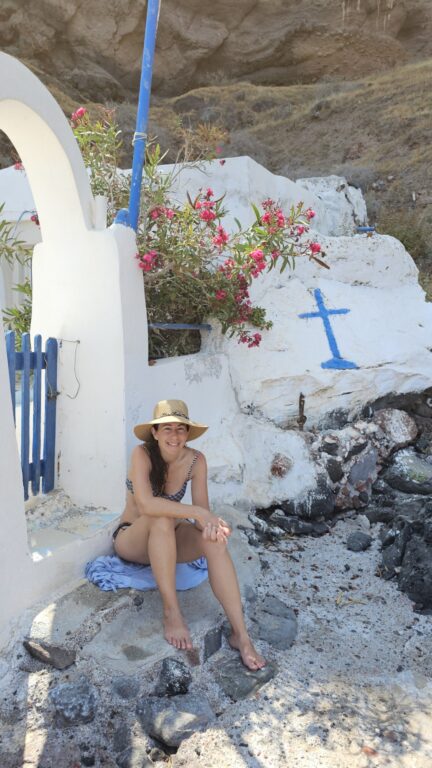
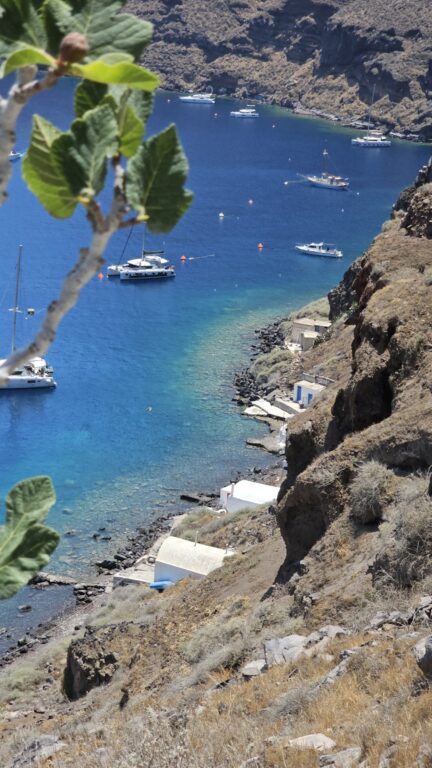
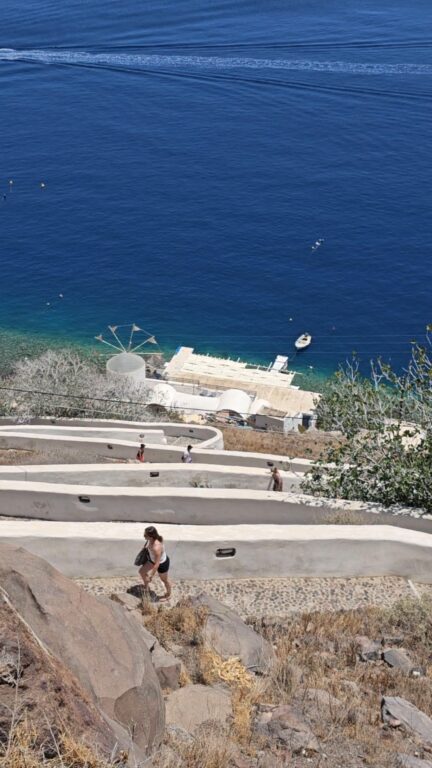
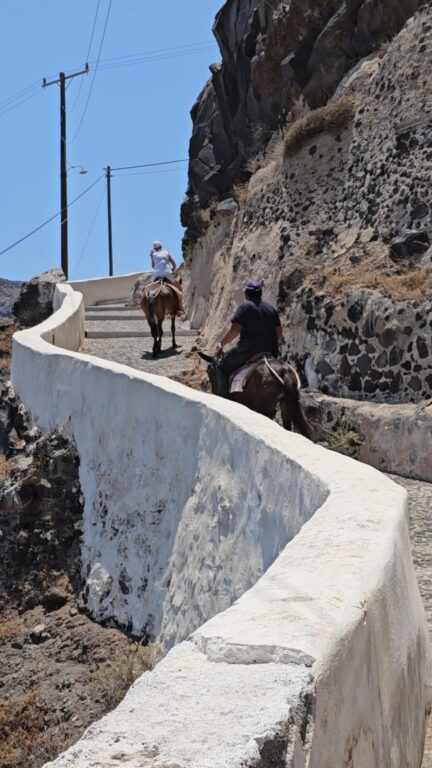
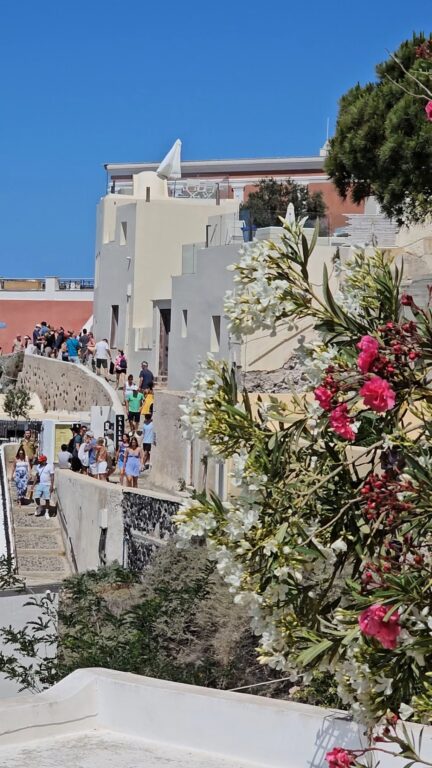
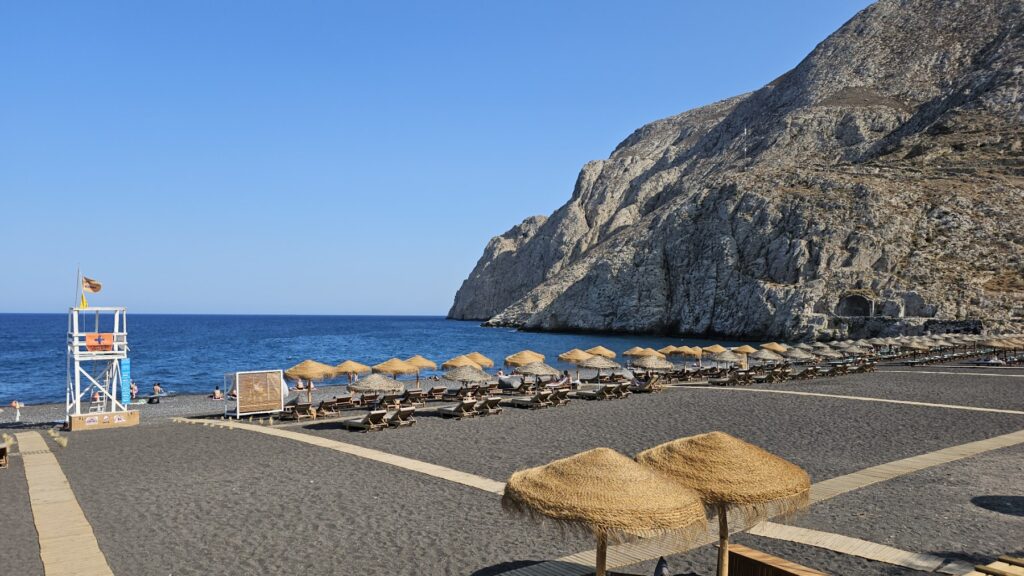
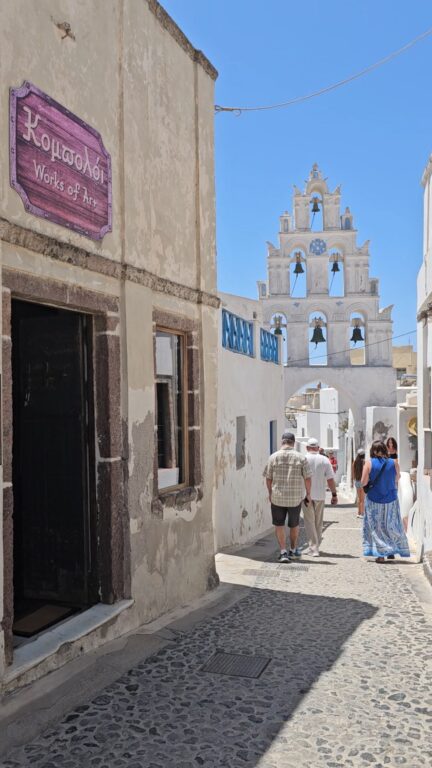
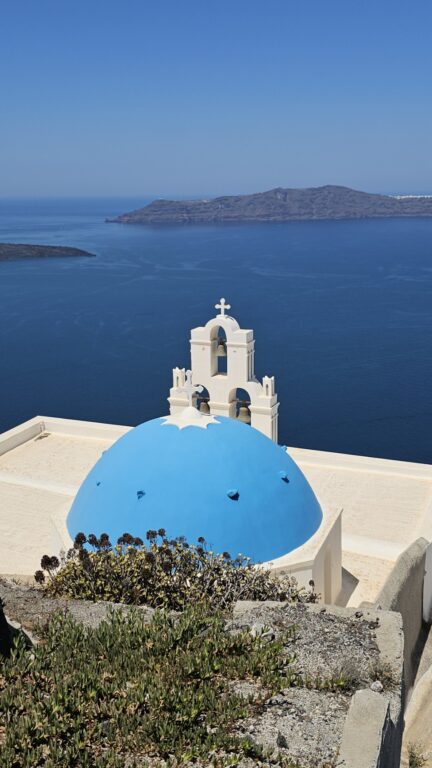
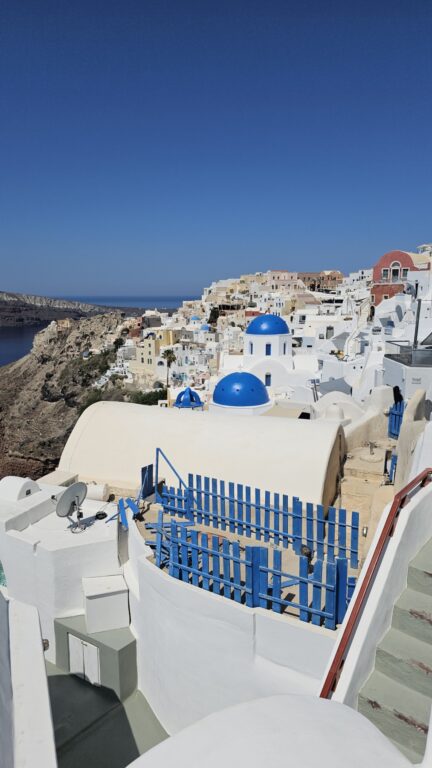
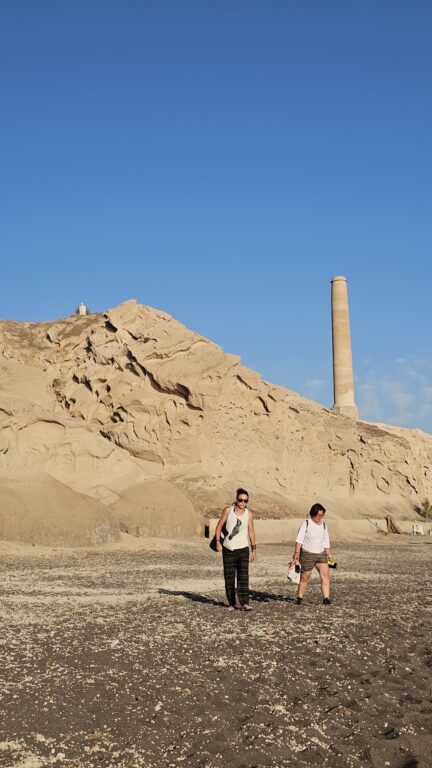
When to Visit
The best times to go are May and September, when the weather is pleasant and the crowds are thinner. If you’re more into nature and authentic experiences than social media snapshots, consider visiting during low season or around Easter. You’ll enjoy uninterrupted views and peaceful moments without waiting in lines.
What Not to Miss
- Oia, Megalochori, Messaria, Firostefani, and Pyrgos — each village has its own charm. Pyrgos, for example, is the highest village with panoramic views and lovely cafés.
- Thirasia – a small nearby island that preserves the feel of old Santorini. You can take a day trip, hike from one port to the other, and return by boat.
- The Caldera Walk from Firostefani to Oia – my personal favorite. The dramatic, arid landscape is unforgettable, offering uninterrupted views and serenity.
- Profitis Ilias – the highest point on the island. Drive or hike up to witness sweeping views and magical moonrises over the caldera.
- The Volcano – visit the volcanic island of Nea Kameni, where you can hike to the crater and then swim in the nearby hot springs at Palea Kameni. A unique geological experience!
- Akrotiri Archaeological Site – a must-visit for history lovers. This ancient Minoan city was buried by a volcanic eruption and preserved, offering fascinating insights into advanced urban life from 3,600 years ago.
- Ancient Thera – ruins of a classical city built on a ridge high above the sea. Walk through Hellenistic streets with temples, houses, and a theater, and enjoy incredible views.
- Museum of Lost Atlantis – a fun, interactive museum that explores the legend of Atlantis and its potential link to Santorini through multimedia exhibits and mythology.
- Sunset Views – while Oia is famous, Firostefani and Akrotiri offer stunning sunset spots without the crowds. Perfect for a quieter, equally impressive experience.
- If you enjoy shopping, clubbing, and the bustling side of the island, you can spend time in Fira, the capital. It’s lively, packed with shops, cafés, bars, and nightclubs—but I would avoid it if you’re looking for a quieter, more authentic experience.
Santorini’s Beaches by Color
While Santorini isn’t known for soft, golden sands like some other Greek islands, its volcanic origins have created striking, colorful beaches with dramatic landscapes. Here’s a breakdown by color:
🖤 Black Beaches
- Perivolos Beach – A long stretch of fine black volcanic sand, lined with beach bars, tavernas, and loungers still you can find loads of free beach to enjoy. Great for swimming, sunbathing, and enjoying a lively beach scene.
- Perissa Beach – Located next to Perivolos, with the same black volcanic sand and deep blue waters. It’s slightly more laid-back, with excellent facilities, tavernas, and accommodation options.
- Kamari Beach – Organized and family-friendly, with black pebbles and a long promenade full of cafés, restaurants, and shops. Ideal for a relaxed day by the sea.
🔴 Red Beach (Kokkini Paralia)
- Famous for its striking red cliffs and reddish sand and pebbles. A unique and photogenic beach, but it can get crowded and the steep path down requires sturdy footwear. I would avoid to swim due to occasional falling rocks.
⚪ White Beaches
- White Beach (Aspri Paralia) – A small, remote cove with light-colored cliffs and white pebbles, accessible mostly by boat. The contrast with the turquoise water is stunning. Not organized, so bring your own supplies.
- Vlychada Beach – My favourite beach. Often called “Moon Beach” for its sculpted white volcanic cliffs. Quiet, less crowded, and atmospheric. There’s a nearby port and a few tavernas, but the vibe is peaceful and raw.
🟡 Bonus: Monolithos Beach
- A softer, sandier beach with shallow waters and gentle waves, ideal for families with children. Well-organized, with a more traditional, laid-back atmosphere.
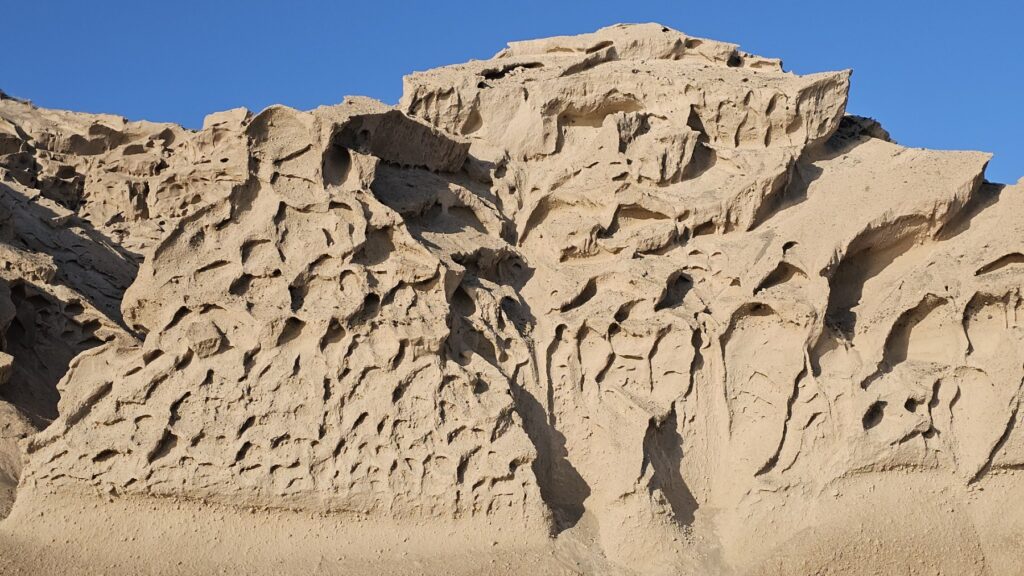
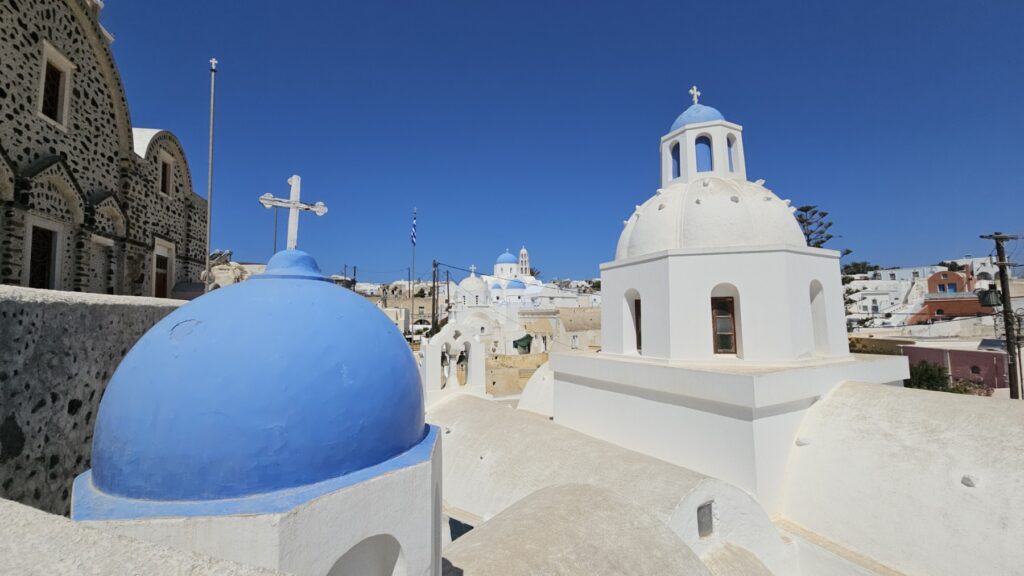
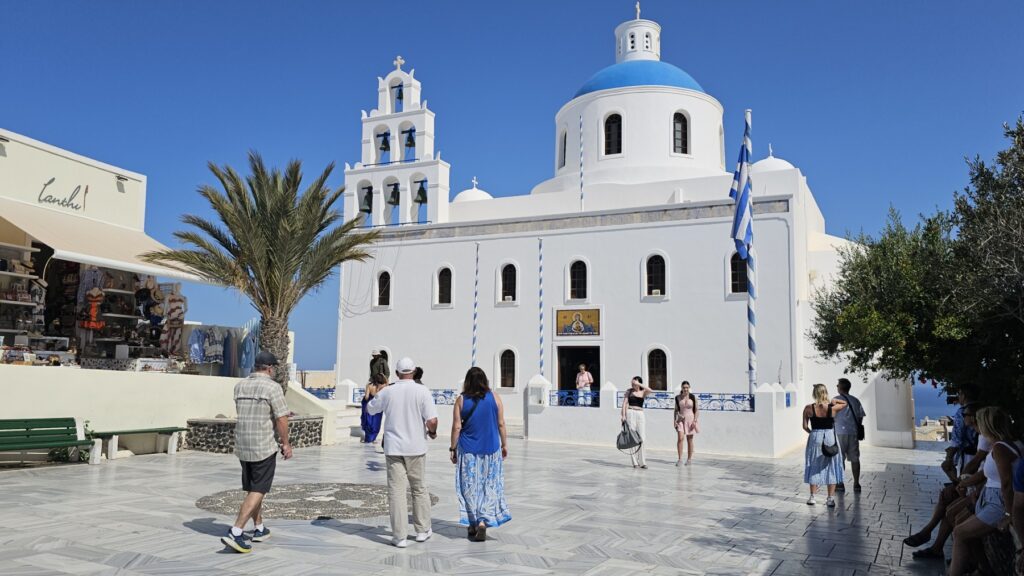
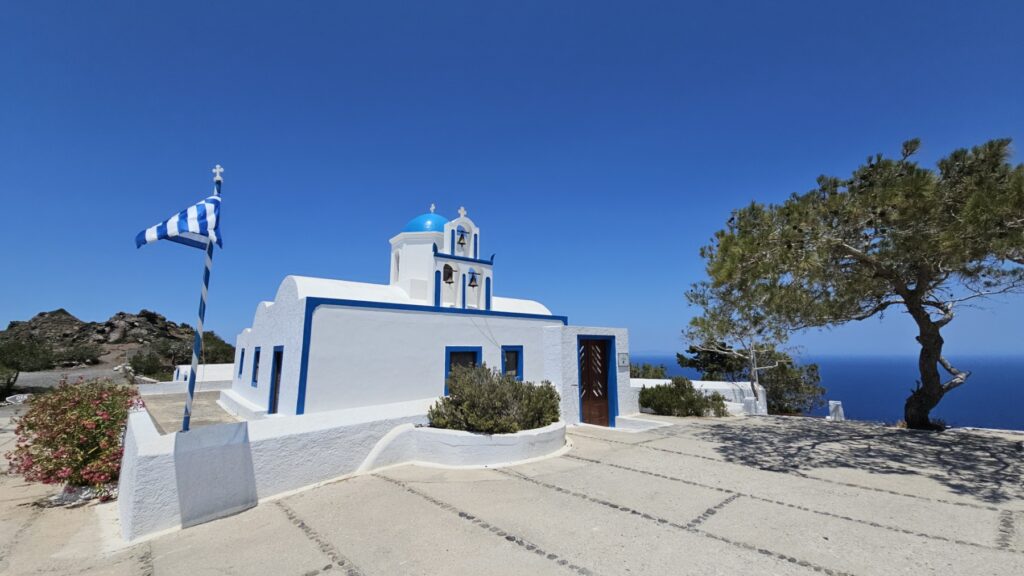
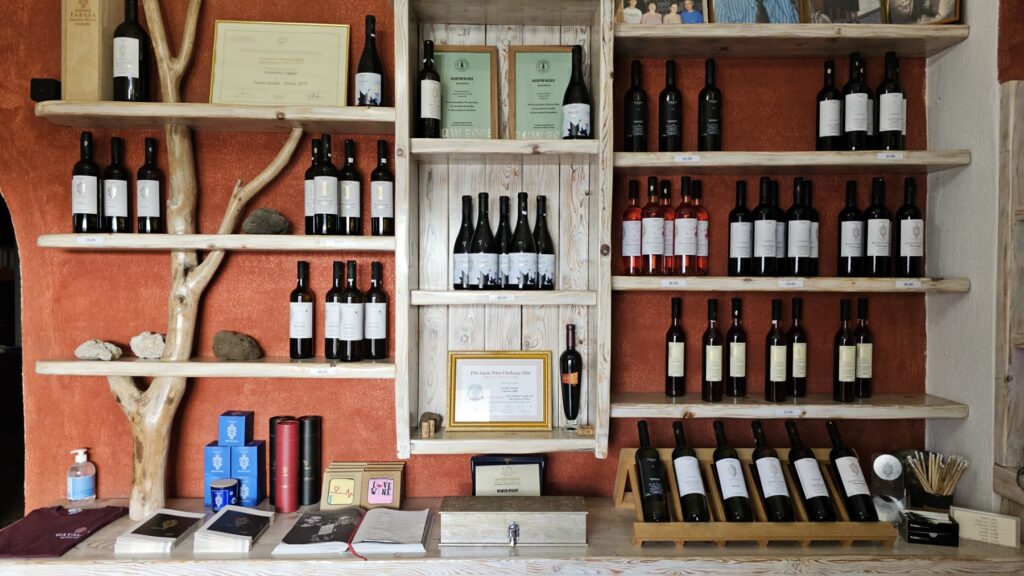
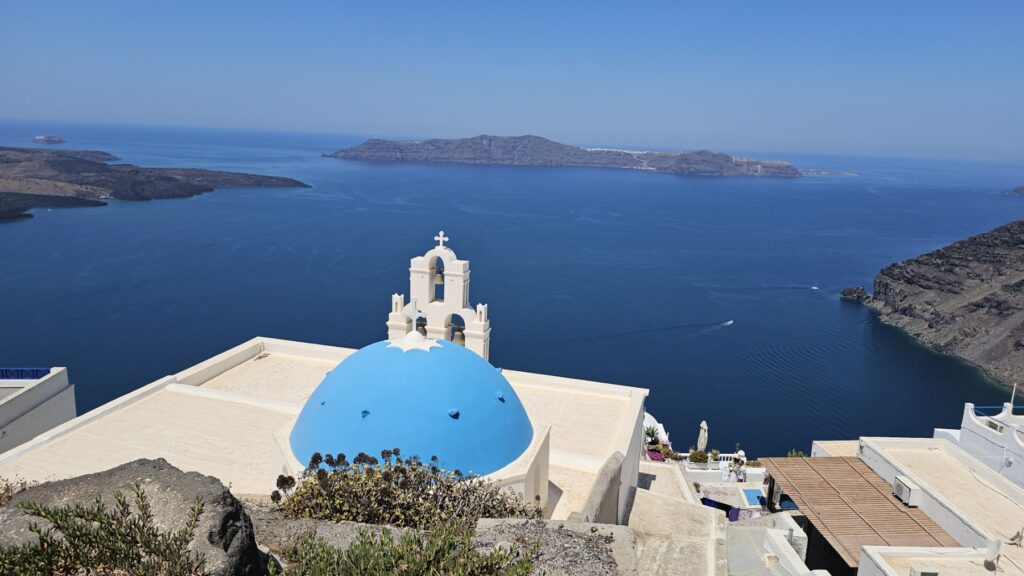
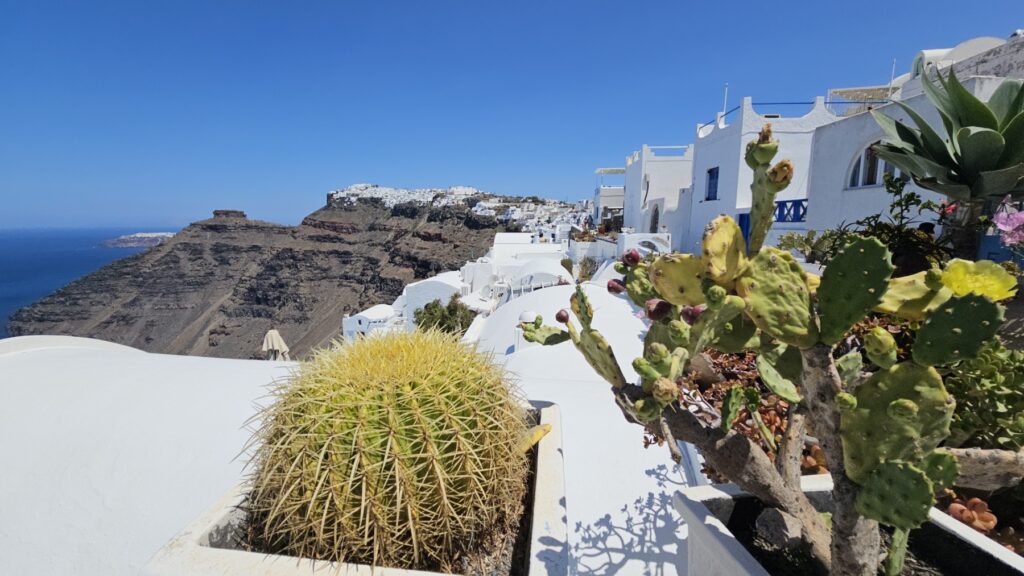
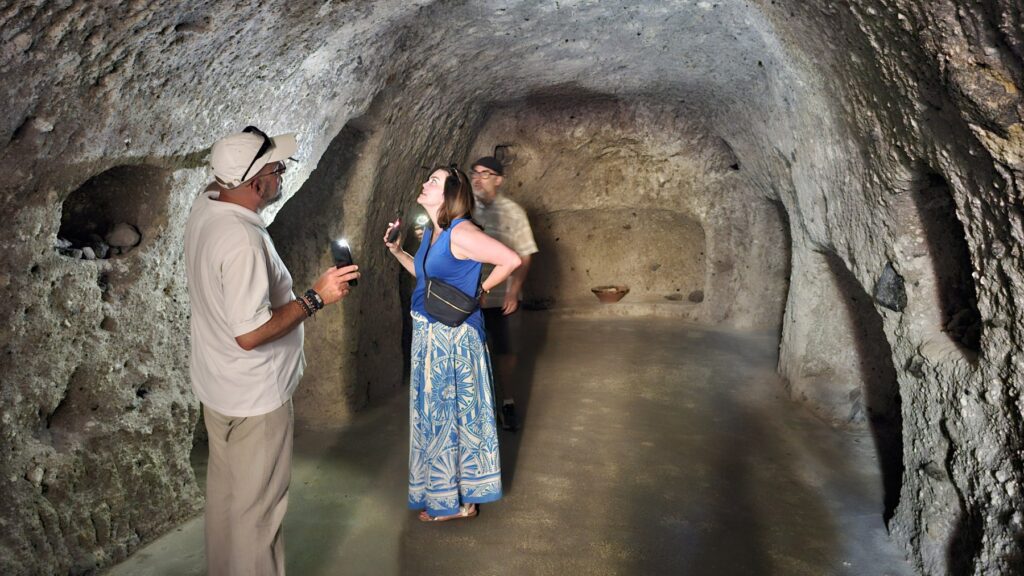
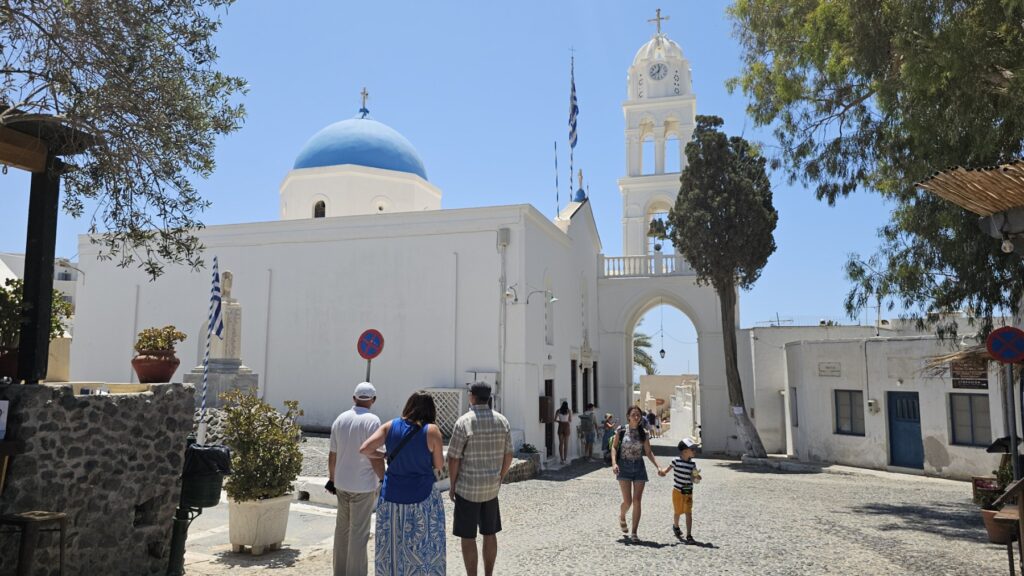
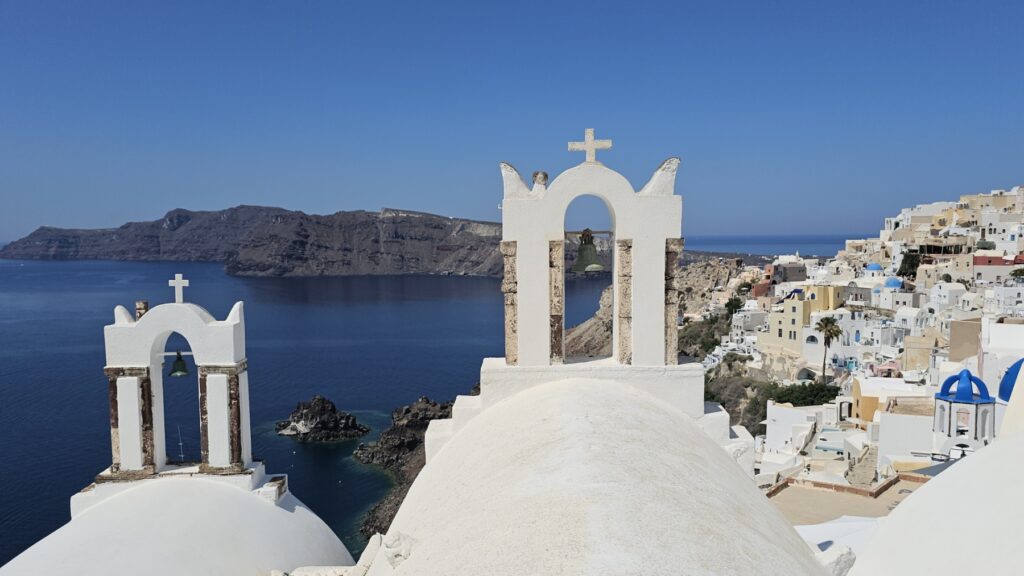
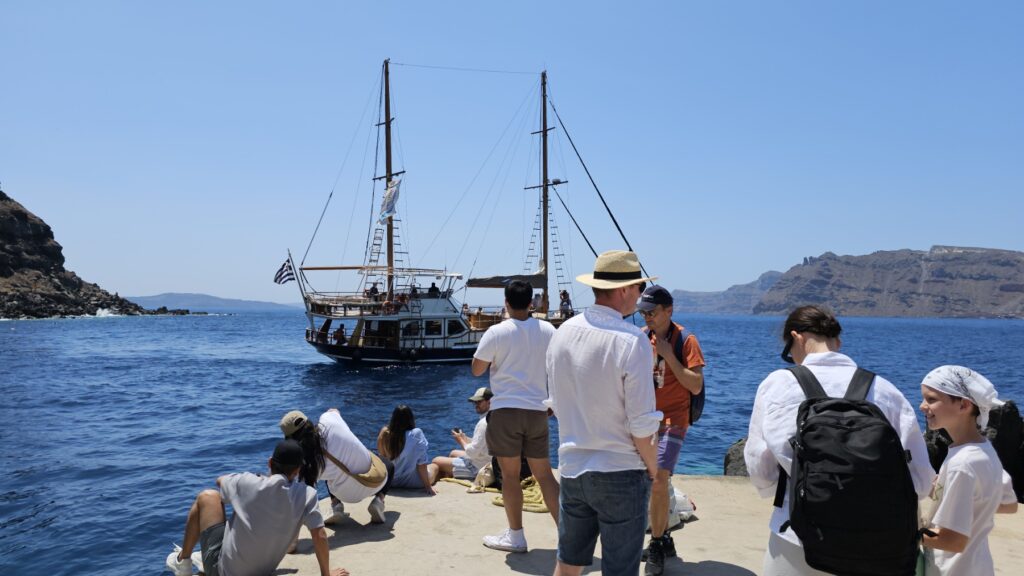
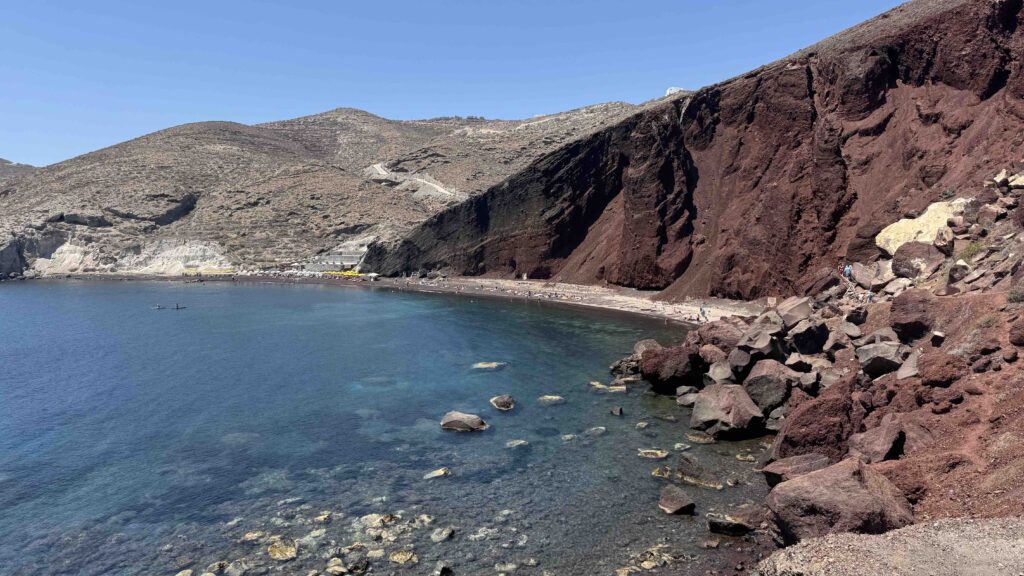
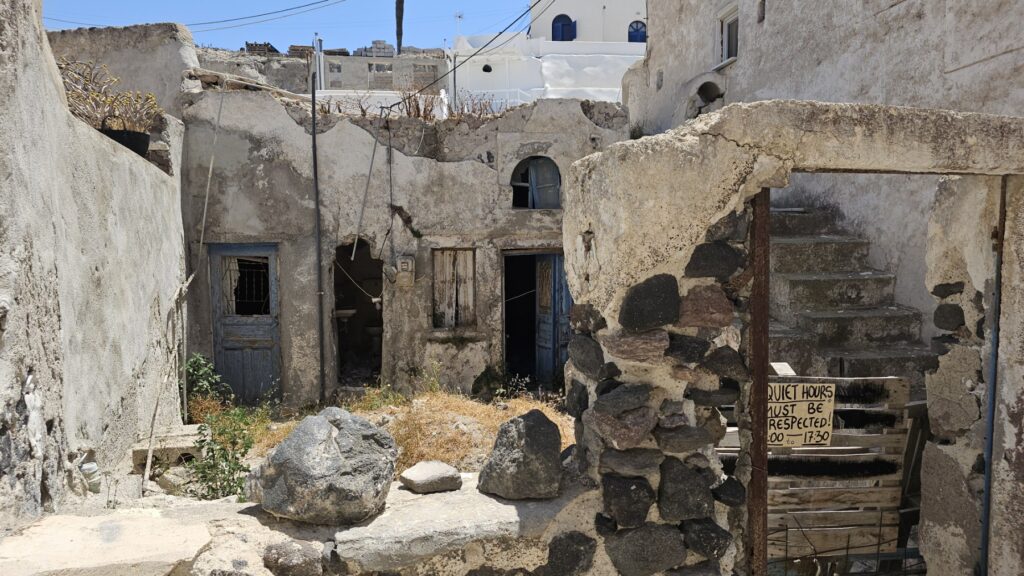
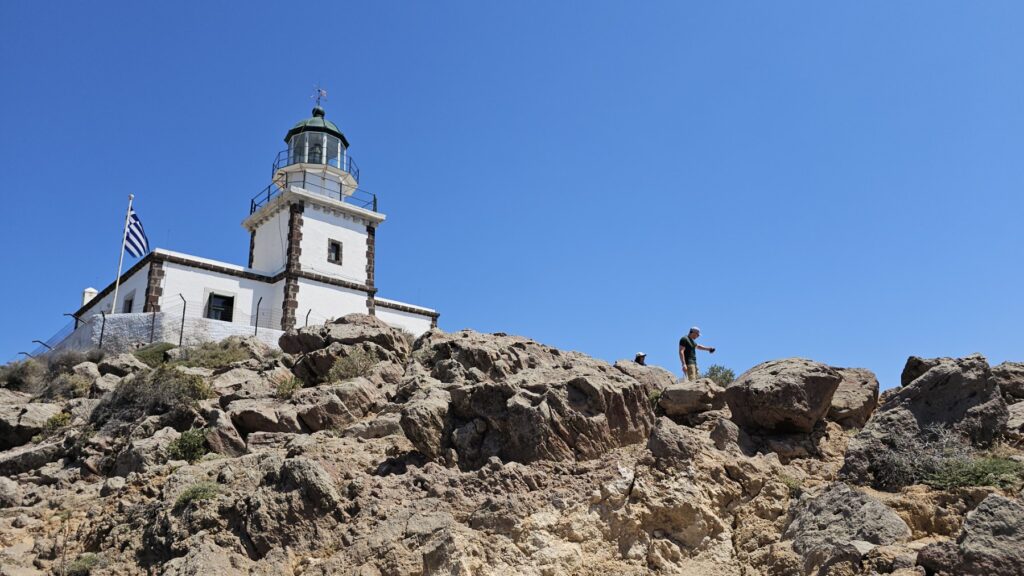
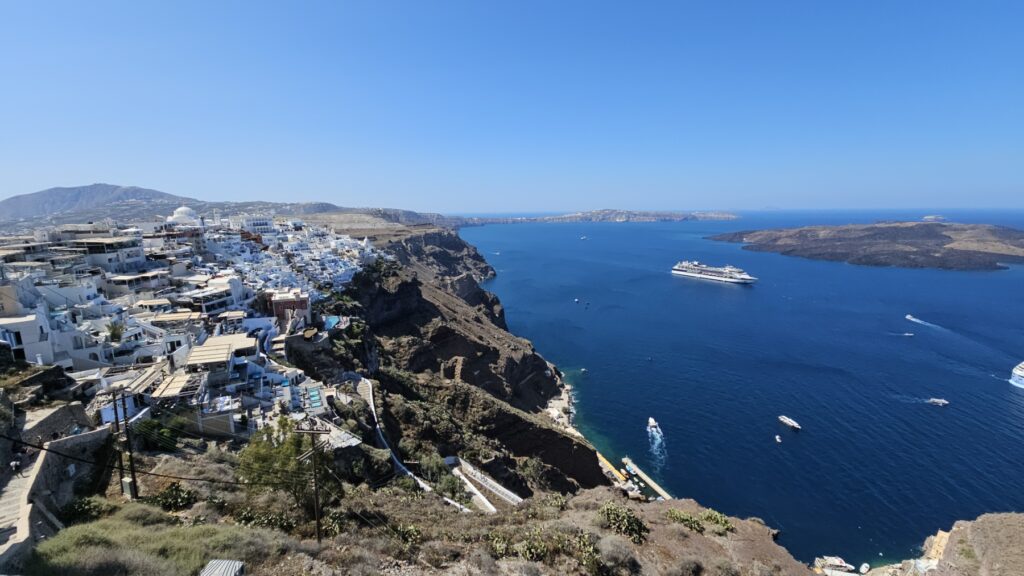

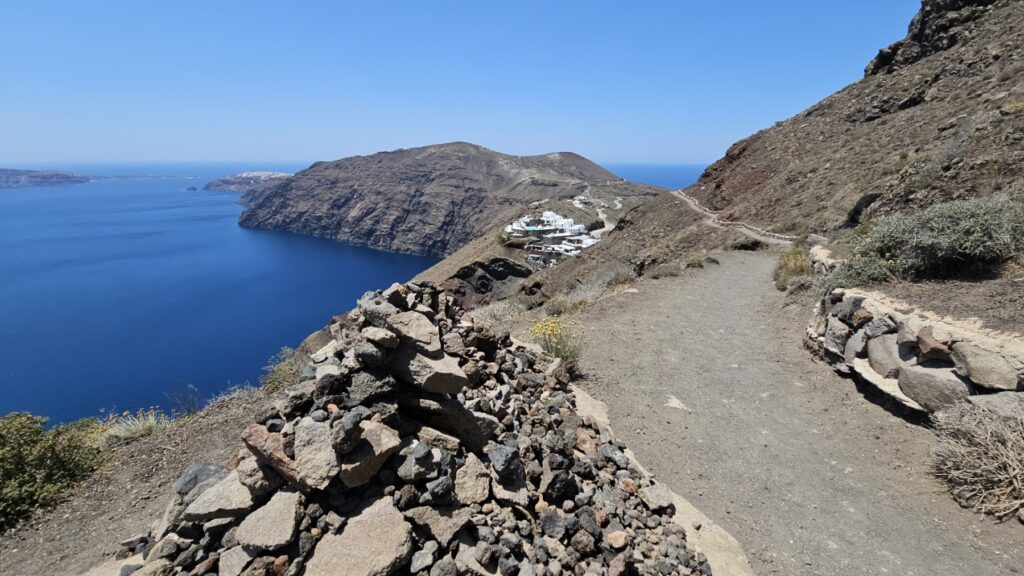
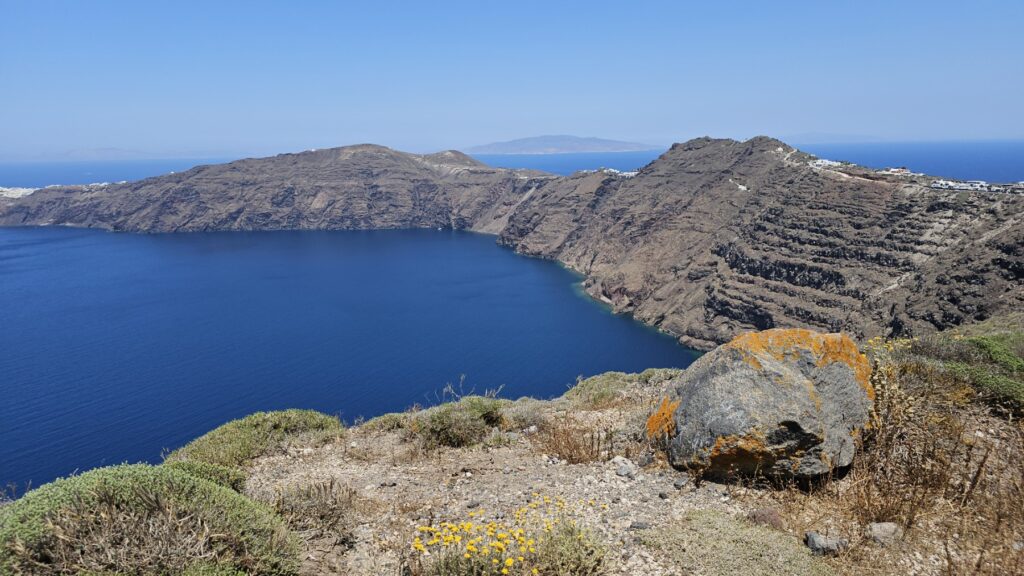
Additional Experiences
If you’re staying more than a few days, Santorini offers a variety of memorable activities:
- Cooking classes with traditional local recipes
- Scuba diving to explore underwater volcanic landscapes
- Horseback riding and kayaking on beaches and trails
- Wine tasting at local wineries like Santo Wines or Gaia Wines
- A visit to the Tomato Industrial Museum to learn about the island’s unique agricultural history
And of course, try the famous Santorini salad, made with cherry tomatoes, local chloro (χλωρό) cheese, unique small cucumbers, and often topped with capers. Don’t miss the local fava beans, the delicious tomato fritters (tomatokeftedes), and freshly grilled or baked local fish served in many tavernas across the island.
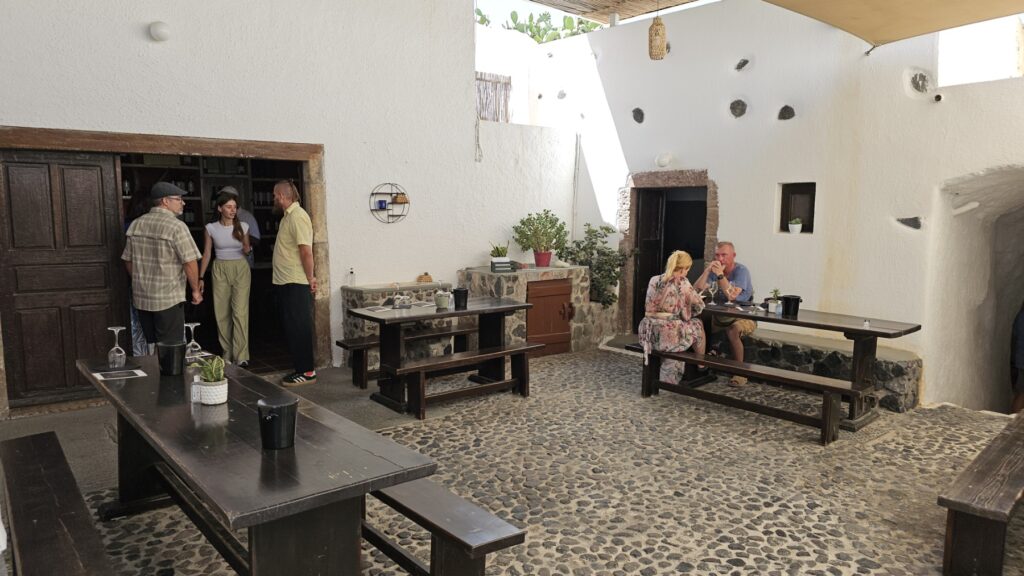

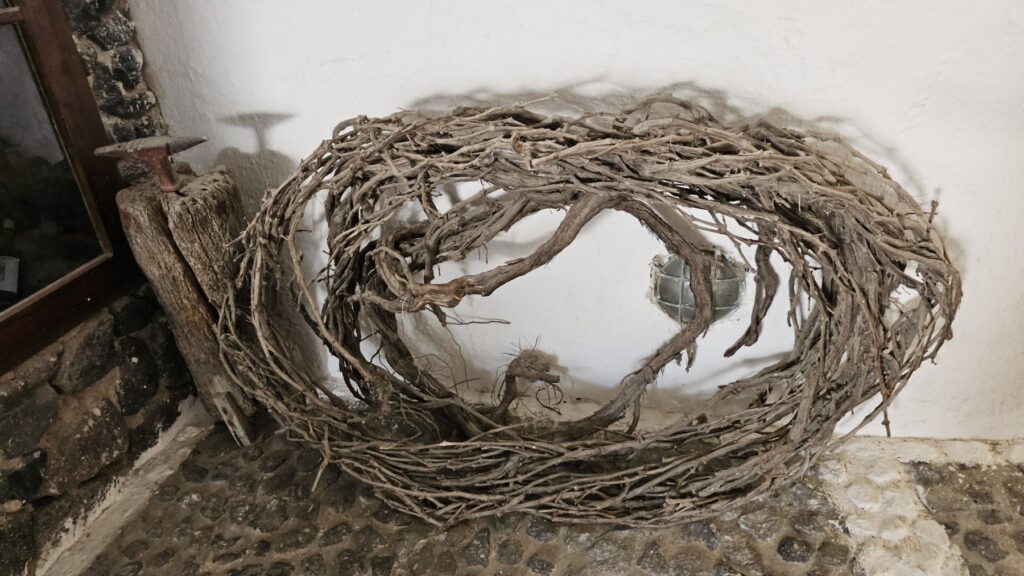

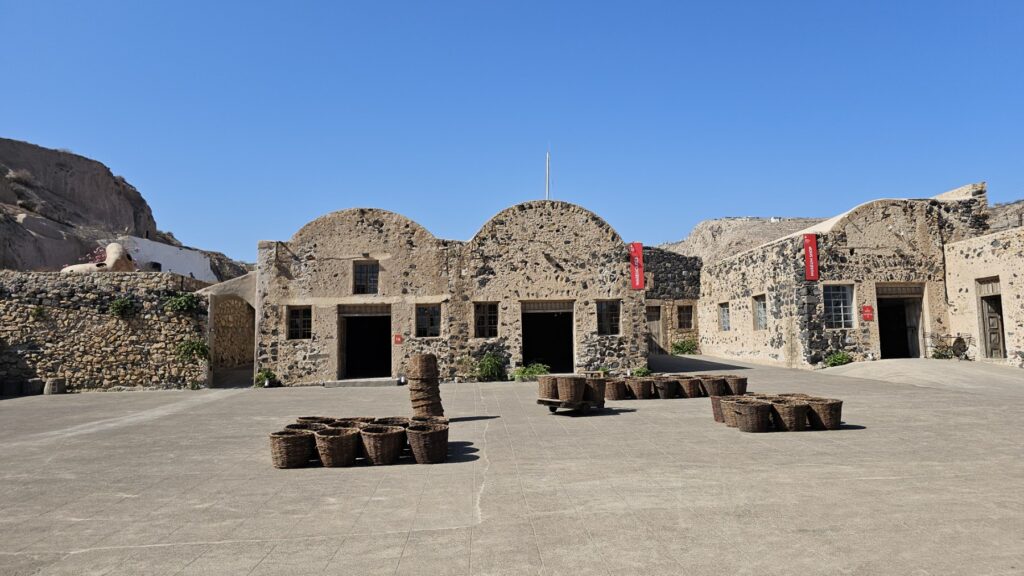




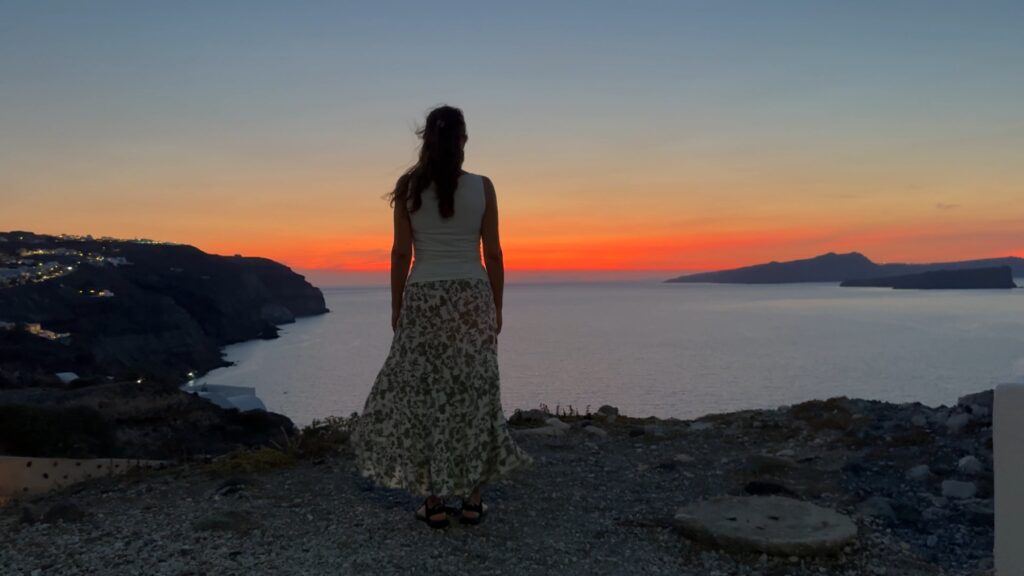
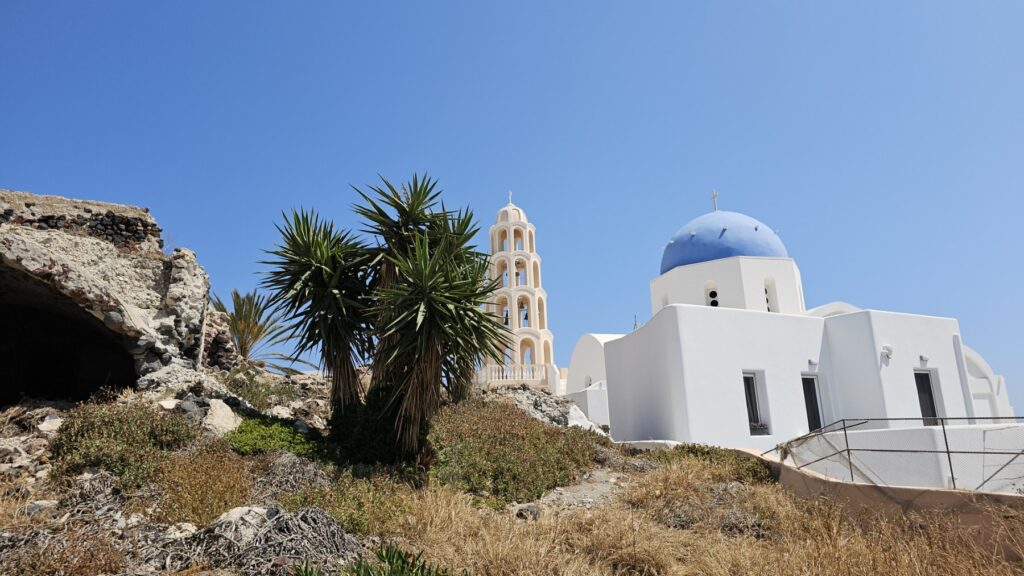
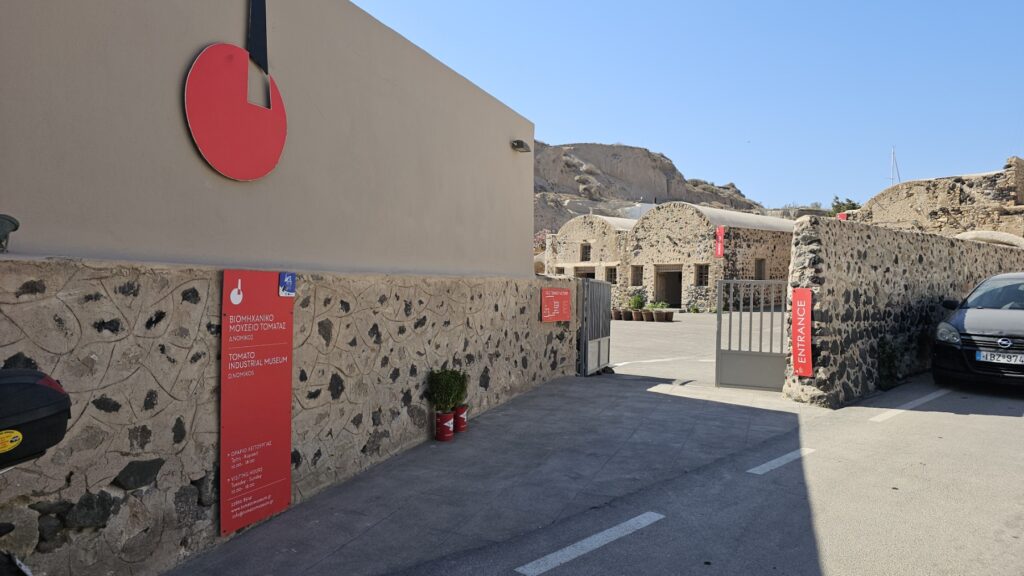
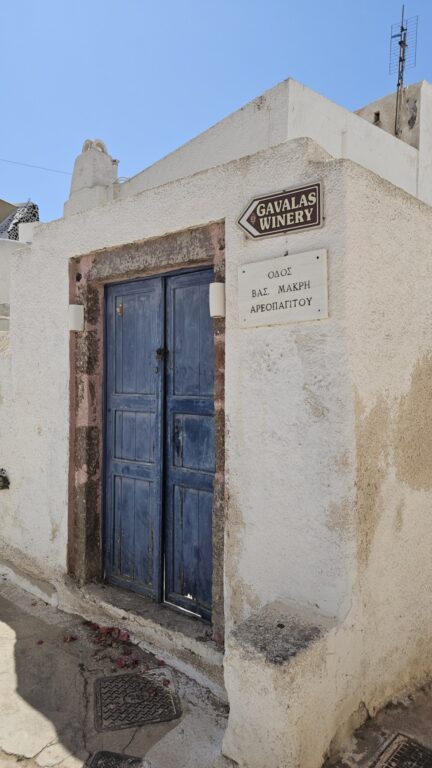
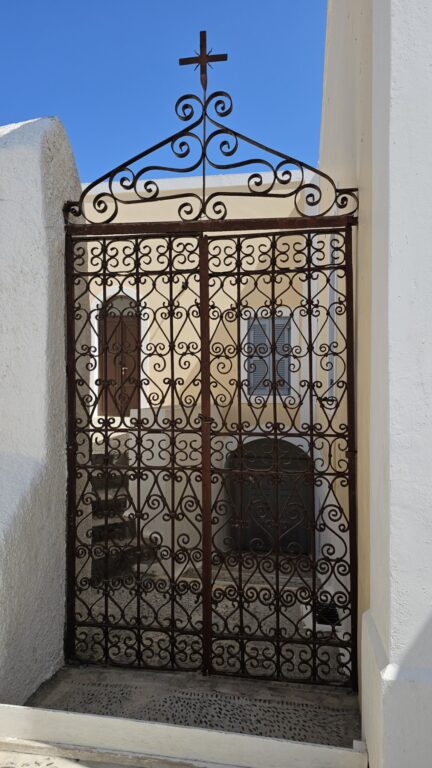
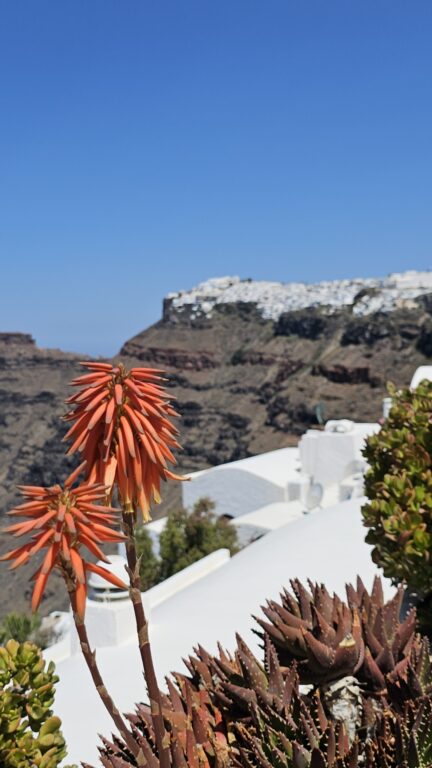


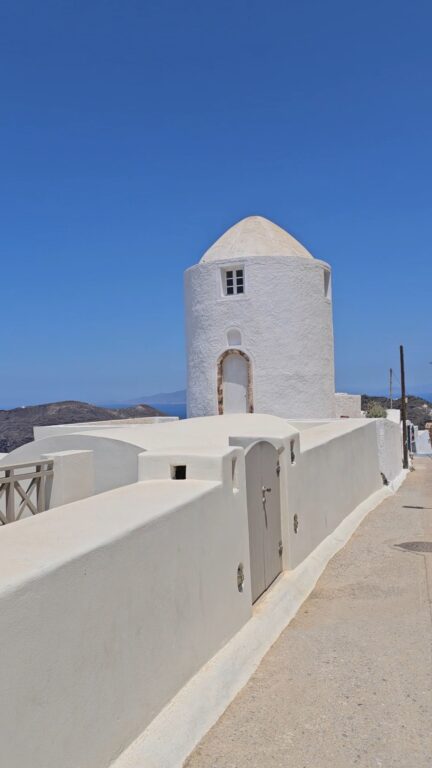

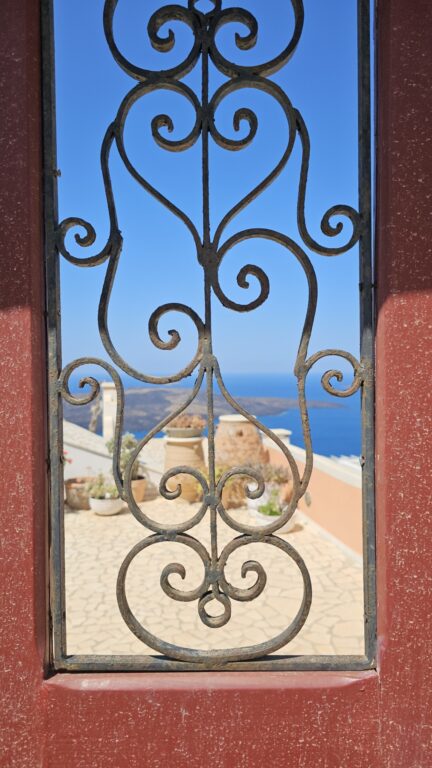
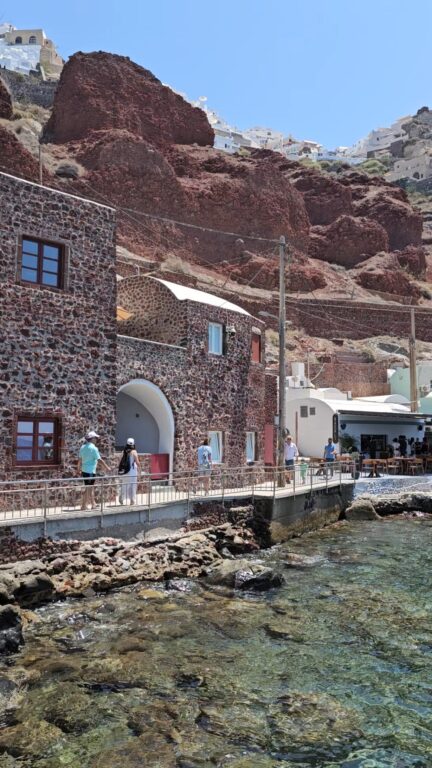
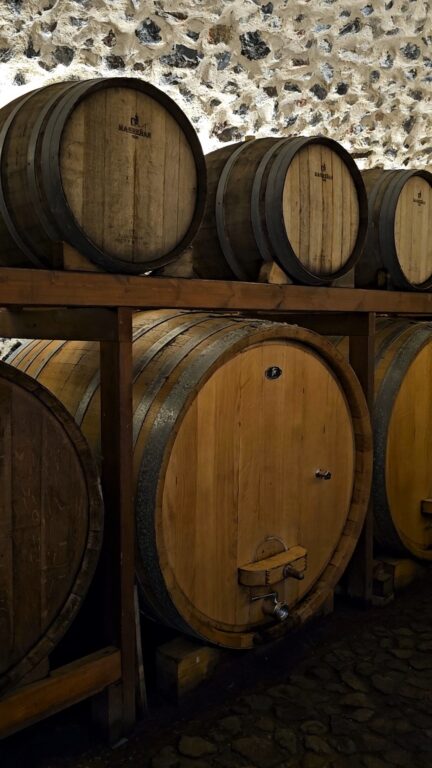
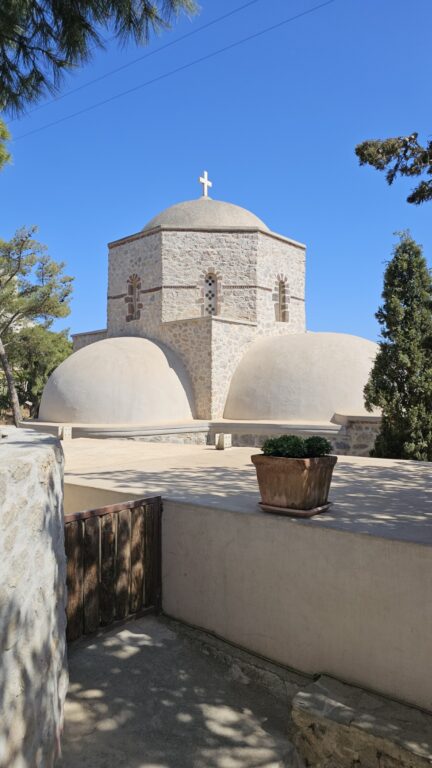
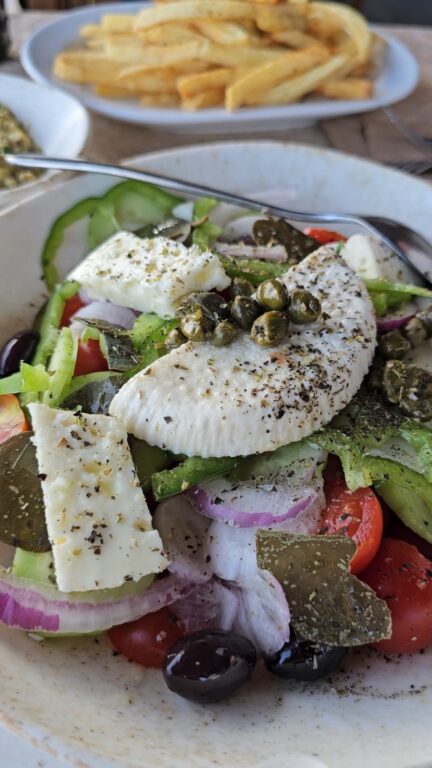
The Five Venetian Kastelia (Castles)
Santorini once had five fortified settlements known as “kastelia,” built during the Venetian era to protect from pirates:
- Skaros Castle (near Imerovigli) – once the island’s capital
- Emporio Castle – a well-preserved labyrinth of alleyways
- Pyrgos Castle – offering 360° views from its peak
- Akrotiri Castle – near the lighthouse and archaeological site
- Oia Castle – now mostly ruins but still an iconic sunset spot
These Castles (kastelia) offer a glimpse into the island’s medieval past and are great for a quieter cultural experience.
Final Tips
- Avoid using the donkeys on steep paths—use the cable car (teleferic) instead if you’re going from the old port to Fira.
- You only need about 3 days to explore the main highlights of the island.
- There are accommodation options for every budget, and in recent years, great-value hotels and rooms have become more widely available.
- Santorini has a generally good public bus service that connects most key villages and beaches, making it a decent option if you prefer not to rent a car or scooter.
However, if you want to make the most of your time and uncover the island’s real character, touring with a good local guide is the best solution—they’ll show you hidden gems you might otherwise miss.
If you decide to visit Santorini, I can create an itinerary and help you arrange everything from rental properties of any budget, organize your tour guide, and any activity or experience you may be interested in.
Please fill in the form below to give me some useful information to create a memorable experience for you.
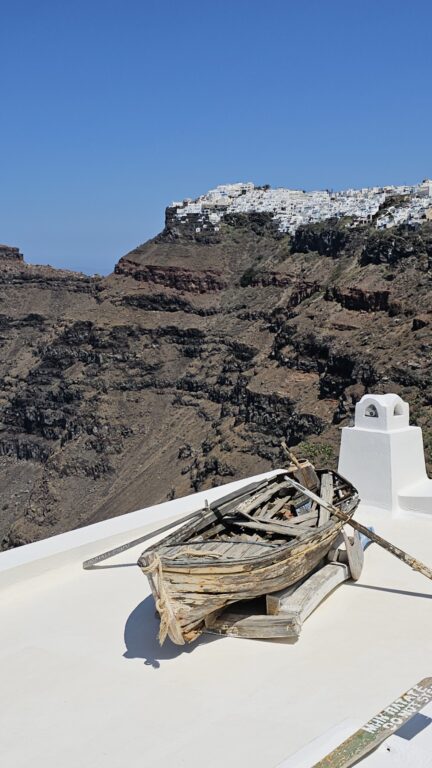
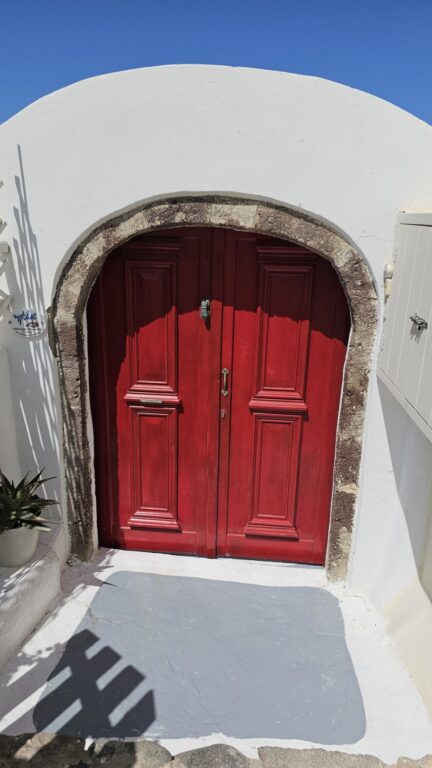

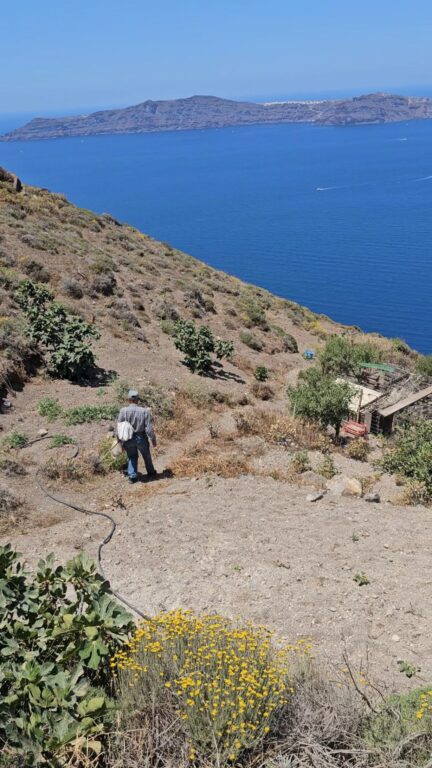
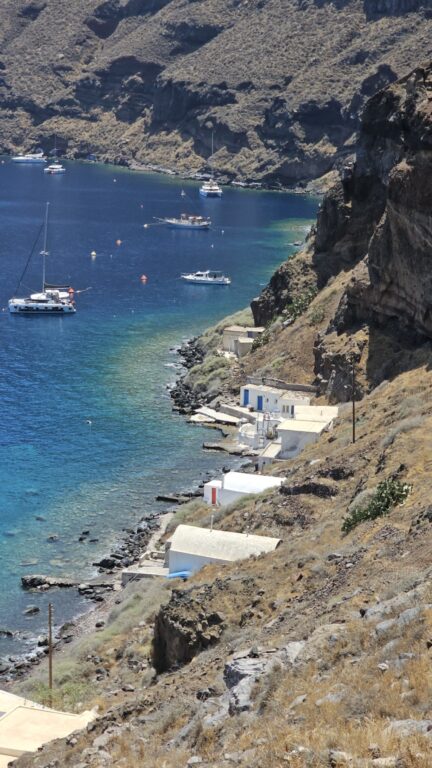
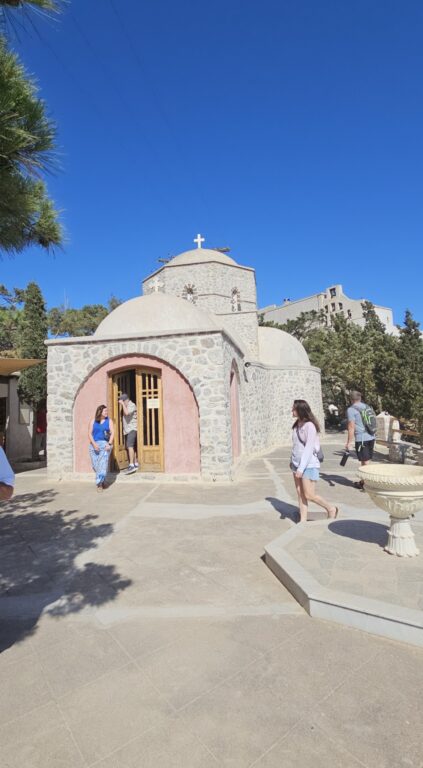
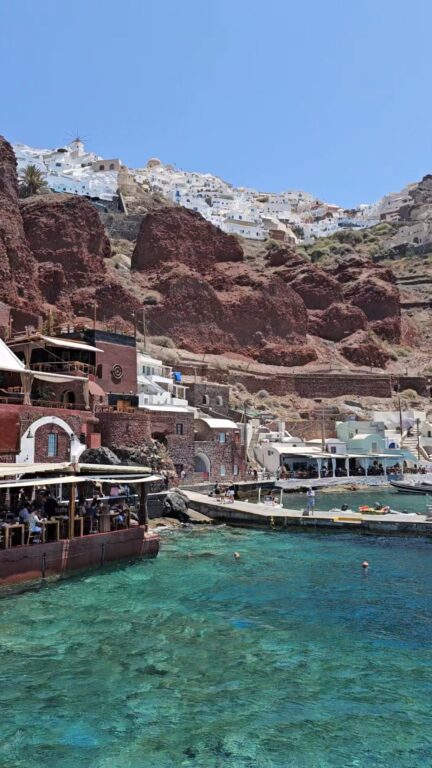

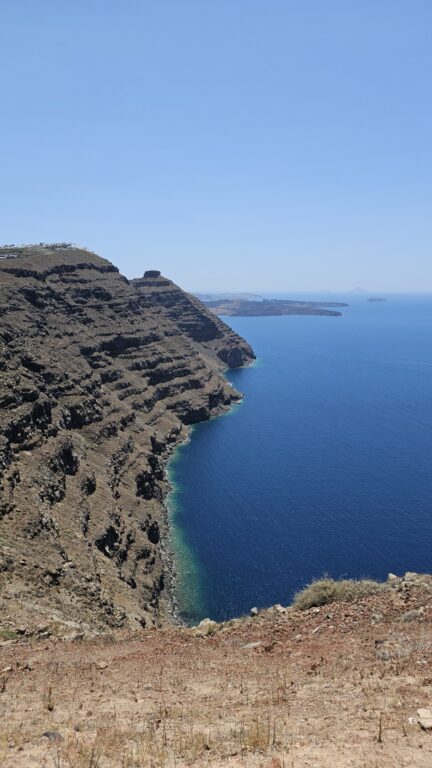
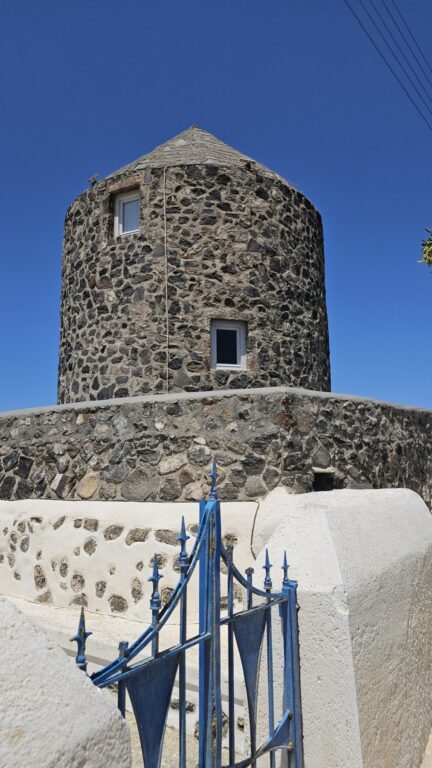
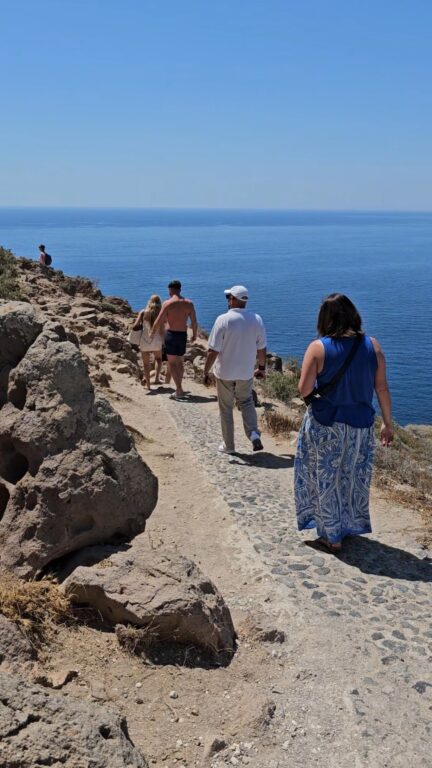
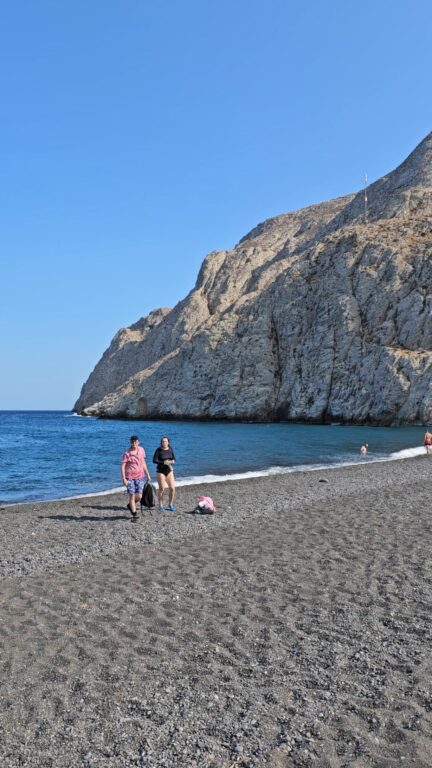

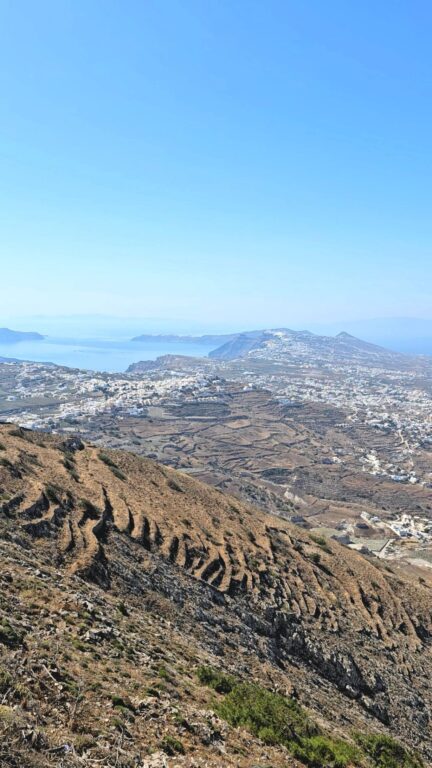
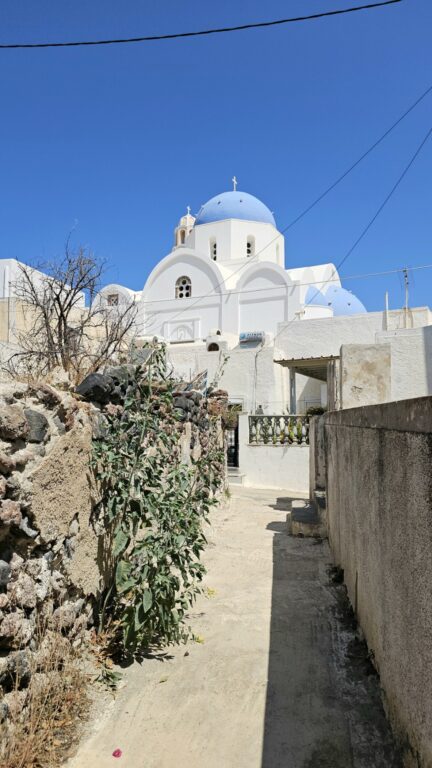
Getting There
Santorini is well-connected to most major European cities, especially during the spring and summer months, with direct flights from cities like London, Paris, Rome, Amsterdam, and Berlin.
Alternatively, you can fly to Athens and then take a quick 45-minute domestic flight to Santorini. Several flights operate daily, so connections are usually smooth and efficient.
If you’re planning to split your holidays between the Ionian and Aegean seas, it’s very doable! For example, you can visit Kefalonia and Santorini in the same trip—just fly via Athens, with minimal waiting time.
Round-trip flight tickets between the islands (via Athens) typically start at around €230, depending on the season and how early you book.
